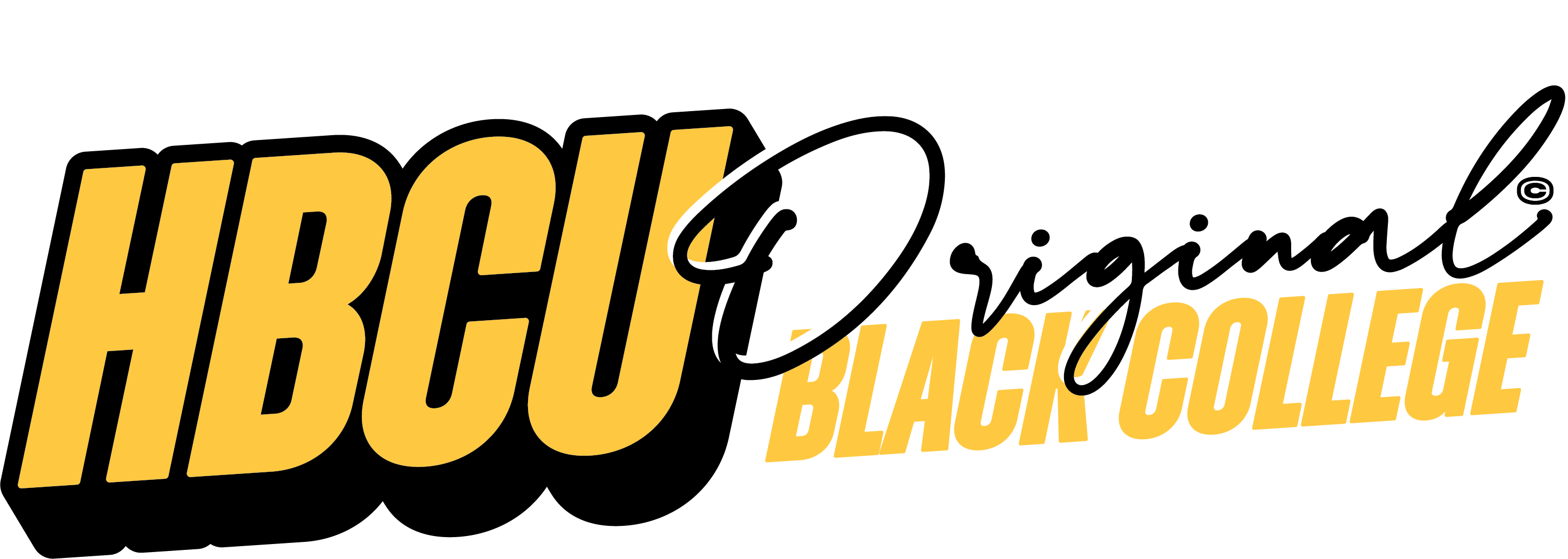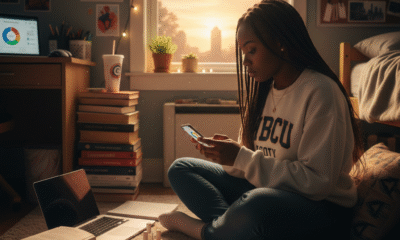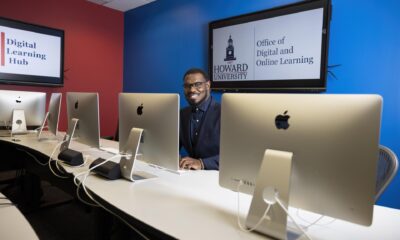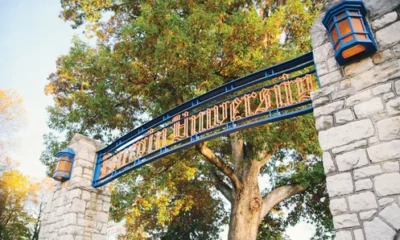HBCU ORIGINAL
North Carolina’s HBCUs: Battling Underfunding, Politics, and Leadership Challenges

North Carolina’s Historically Black Colleges and Universities (HBCUs) are at a crossroads, facing an uphill battle against political shifts, financial inequities, and leadership turnover. In just three years, seven out of ten HBCU leaders in the state have stepped down—an alarming trend fueled by partisanship, longstanding underfunding, and internal governance struggles.
The Political Storm: DEI Under Fire
Harold Martin Sr., Chancellor Emeritus of North Carolina Agricultural and Technical State University (N.C. A&T), highlights the shifting political landscape as a major hurdle. With efforts to ban Diversity, Equity, and Inclusion (DEI) initiatives gaining traction, HBCU administrators are finding it increasingly difficult to foster inclusive environments.
“The push to eradicate DEI has impacted higher education nationwide, but it’s particularly concerning for HBCUs,” Martin explains. “We are all trying to navigate how this affects our ability to recruit students and create a welcoming atmosphere on campus.”
Two anti-DEI bills introduced in the North Carolina General Assembly—Senate Bill 227 and House Bill 171—threaten to further marginalize these institutions. The former seeks to eliminate DEI in public education, while the latter extends these restrictions to state and local government agencies, even criminalizing the use of public funds for DEI efforts.
Jerry Wilson, Director of Policy and Advocacy at the Center for Racial Equity in Education (CREED), sees this political climate as a driving force behind leadership instability.
“It’s incredibly challenging to serve the students that HBCUs cater to when equity initiatives are under attack,” Wilson notes. “These institutions have long worked to level the playing field, but now even that mission is being scrutinized.”
Federal Threats: What’s at Stake for HBCU Funding?
Beyond state-level politics, HBCUs are also bracing for potential federal funding cuts. Martin warns that if the U.S. Department of Education is dismantled, as proposed by former President Donald Trump, Title III-B funding—critical for minority-serving institutions—could be in jeopardy. These funds support essential services like staffing, technology upgrades, and infrastructure maintenance.
“Losing these funds would be devastating,” Martin emphasizes. “HBCUs rely on them for financial stability, and their absence could put many institutions at serious risk.”
A History of Underfunding
HBCUs have faced chronic underfunding for decades. A 2023 federal analysis revealed that from 1987 to 2020, 16 of the nation’s 19 historically Black land-grant universities were underfunded by a staggering $13 billion. North Carolina alone has a funding gap exceeding $2 billion between its HBCU land-grant institutions and their predominantly white counterparts.
David Sheppard, Chief Business and Legal Officer for the Thurgood Marshall College Fund, underscores the impact of this disparity.
“State governments are simply not honoring their obligations to fund HBCUs equitably,” Sheppard states. “This puts these institutions at a severe disadvantage compared to predominantly white institutions that receive full state support.”
Financial Pressures and Enrollment Challenges
For private HBCUs, financial stability hinges on tuition revenue. Unlike public universities, they don’t receive state funding, forcing them to balance affordability with operational sustainability. Many students depend on federal aid and loans to afford tuition, making any disruptions to funding particularly damaging.
Public HBCUs face a different financial strain: tuition rates are controlled by the University of North Carolina (UNC) System Board of Governors. For nearly a decade, the board has restricted tuition hikes for in-state students, limiting revenue growth. Given that most HBCU students are in-state, this restriction has created financial hurdles.
“The competition for students is intense,” Martin explains. “With a relatively flat high school graduation rate in North Carolina, all universities—both public and private—are fighting for the same pool of students.”
Recognizing these challenges, Martin successfully petitioned to increase N.C. A&T’s out-of-state enrollment cap from 18% to 25% during his tenure. This strategy led to increased enrollment, improved retention, and stronger graduation outcomes. Today, several North Carolina HBCUs have expanded their out-of-state enrollment caps:
- N.C. A&T & North Carolina Central University: 35%
- Elizabeth City State University: 50%
- Winston-Salem State University & Fayetteville State University: 25%
Infrastructure and Technological Gaps
Underfunding extends beyond tuition—it affects campus infrastructure and technology. While predominantly white institutions boast cutting-edge facilities and seamless Wi-Fi access, many HBCUs struggle with outdated buildings and limited digital resources.
“Imagine a college campus where Wi-Fi isn’t a given,” says Harry Williams, President and CEO of the Thurgood Marshall College Fund. “It’s a basic necessity for modern education, yet some HBCUs lack reliable access, putting students at a disadvantage.”
Governance Conflicts and Leadership Exodus
A lesser-discussed issue plaguing HBCUs is governance conflict. Increasingly, university board positions are filled with political appointees who may lack higher education experience. According to Sheppard, these board members often overstep their roles, creating friction with university presidents and chancellors.
“Some appointees come in with their own agendas, rather than focusing on the institution’s best interests,” he explains. “This interference makes leadership positions untenable, leading to high turnover.”
The Future of North Carolina’s HBCUs
Despite these challenges, Wilson remains firm in his belief that HBCUs are more essential than ever.
“These institutions were founded out of necessity, and their role remains just as critical today,” Wilson says. “At a time when diversity and equity efforts face hostility, HBCUs continue to be the best option for Black students in North Carolina.”
As North Carolina’s HBCUs navigate these turbulent waters, their resilience and commitment to education remain unwavering. However, the path forward demands advocacy, equitable funding, and policies that prioritize their survival—not their suppression.
Events
💰 Dorm Room Deep Dive: The True Cost of the HBCU Experience

The choice to attend a Historically Black College and University is an investment in legacy, culture, and career trajectory. But for thousands of students and their families, the cost of that legacy comes with a profound financial strain, translating into high debt and a constant hustle.
This is a look beyond the sticker price, examining the Dorm Room Deep Dive into the economics of student life and the rising cost of the most essential American investment.
The Net Price Gap: Where the Financial Aid Stops
The most critical figure in an HBCU student’s financial life is not the tuition—it’s the net price, the amount remaining after all grants and scholarships are applied. For students at Historically Black Colleges and Universities, that gap is larger and more persistent than almost anywhere else.
Key Facts: The Affordability Challenge
| Financial Metric | HBCU Student Reality | Context & Impact |
| Unmet Need | Black students face the highest average unmet financial need, often exceeding $9,000 annually. | This is the gap students must close with loans, family contributions, or income. |
| Debt Burden | 86% of HBCU graduates leave with student loan debt. | The median debt at graduation is over $34,000. |
| The Wealth Gap | Four years after graduation, Black borrowers owe, on average, $25,000 more than their White peers. | This disparity is due to lower family wealth, slower repayment, and often greater borrowing for graduate school. |
While institutional and federal grant aid is robust—with over 85% of HBCU undergraduates receiving some form of grant assistance—the aid simply hasn’t kept pace with the comprehensive cost of attendance.
📈 2025-2026: Cost Projections and the Rising Tide
For the 2025-2026 academic year, the average total Cost of Attendance (COA) for an HBCU student living on campus is projected to fall in the range of $32,000 to $35,000, with many private institutions exceeding $55,000.
This rise is driven not just by tuition, but by escalating prices across the board.
The “Hidden Inflation” of College Life
The yearly tuition hike, often projected around 3.5% to 4.0% for the upcoming year, is only part of the equation. Students are getting hit hardest by non-tuition costs:
-
Mandatory Fees: Fees for technology, health services, and campus facility debt are rising faster than tuition. A student might see a flat tuition rate but a 10% jump in their “Student Services Fee” that is non-negotiable.
-
Room and Board: Housing costs are increasing due to construction, maintenance, and utility expenses. This often includes mandatory meal plans—a fixed cost that may not fully align with the student’s actual weekly grocery or dining budget.
-
Textbooks and Course Materials: Despite the shift to digital, the cost for access codes and specialized online materials can easily top $1,500 annually, draining financial aid refunds long before the semester ends.
-
Transportation and Loan Fees: An often-overlooked cost is the expense of traveling to and from campus. Furthermore, the small but mandatory loan origination fees on federal loans mean students often receive less than the amount they actually borrowed.
The Future Price Tag
If costs continue to rise at an average annual rate of 3.25%, a student entering an HBCU in 2025 with a $35,000 COA would face a cumulative four-year sticker price of over $147,000 by graduation in 2029. This is the staggering financial trajectory that underpins every student’s academic planning.
🤝 The Lifelines: Funding Your Future & Lessening the Blow
While the costs are daunting, there are powerful financial lifelines available to HBCU students that can significantly reduce the need for high-interest private loans. Success requires proactive planning and a deep dive into targeted resources.
Targeted Resources for HBCU Students
| Resource Type | Key Programs & Organizations | How They Help |
| Federal Government | FAFSA (Free Application for Federal Student Aid), Pell Grant (up to $\sim$7,395 for 2025-26), Federal Work-Study | Provides the foundational need-based aid. Pell Grants are crucial “free money” that does not have to be repaid. |
| HBCU Affiliates | UNCF (United Negro College Fund), TMCF (Thurgood Marshall College Fund) | These organizations offer hundreds of scholarships specifically for students attending their member institutions, often sponsored by major corporations (e.g., Apple, Google, Lowe’s). |
| State Grants | State-Specific Aid (e.g., Georgia’s HOPE, Ohio College Opportunity Grant) | Many states offer grants that are often tied to in-state enrollment and financial need. Check your state’s Department of Higher Education website. |
| Innovative Aid | Student Freedom Initiative | A non-profit offering an income-contingent funding alternative, particularly for STEM majors at Minority Serving Institutions, reducing reliance on traditional loans. |
| Private/Need-Based | Ron Brown Scholarship, ABOUT LOVE Scholarship, NAACP Scholarships | Large, competitive scholarships that target high-achieving, community-focused, and financially disadvantaged students. |
Practical Strategies to Reduce the Blow
-
Maximize “Free” Money: Apply for every external scholarship possible, focusing on awards specific to your major, state, or community involvement. Do not rely solely on your institution’s aid package.
-
Cut Textbook Costs with OER: Before buying new textbooks, check if your campus or department participates in Open Educational Resources (OER) initiatives, which provide free, openly licensed digital course materials. This can save hundreds per semester.
-
Leverage Institutional Discounts: Research which HBCUs offer universal in-state tuition rates or tuition waivers for specific student demographics (e.g., in-state students, high-achieving transfer students).
-
Work-Study First: If you must work, prioritize Federal Work-Study positions. These are subsidized by the government, meaning the university’s budget is less strained, and the earnings don’t count against your FAFSA eligibility for the following year.
-
Audit Your Fees: When reviewing your bill, question any non-essential fees (e.g., expensive parking passes, optional insurance). Every dollar saved against the non-tuition cost is a dollar that doesn’t become future debt.
✊ The Campus Side Hustle: Economy of Resilience
With a $9,000 average unmet need hovering over their heads, HBCU students have become masters of the “side hustle” economy, leveraging the unique cultural environment of the campus to generate income.
This is a necessary culture of entrepreneurial resilience, where skills are currency:
-
The Beauty & Styling Network: A student with braiding or barbering skills can generate hundreds of dollars per week, with prices spiking during major events like Homecoming. This is income used directly for rent, car notes, or to pay down a tuition balance.
-
The Food & Delivery Gap: Beyond national delivery apps, students often run micro-businesses selling homemade food (plates, snacks, or Sunday dinners) out of their apartments or dorms, using the dense campus environment as a ready market.
-
Academic Services: Students with a high GPA can earn money as tutors or by preparing intensive study guides for challenging courses.
This constant push to earn ensures cultural participation and personal solvency, but it comes at a cost: time. Every hour spent hustling is an hour taken away from studying, networking, or sleep, creating a heavy burden of academic and financial stress that is part of the modern HBCU reality.
The value of the HBCU experience—the incomparable network, the sense of community, and the unparalleled professional launchpad—is undeniable. But to access that value, the average student must first conquer a formidable financial mountain. The Dorm Room Deep Dive confirms that the Black college experience is not just an academic journey; it is a profound lesson in economic resilience.
🔗 The Lifelines: Essential Financial Aid Resources
For students and families navigating the financial challenges of the HBCU experience, these organizations offer critical financial aid, scholarships, and innovative funding solutions.
| Resource | Organization | Direct Link |
| Federal Aid | Free Application for Federal Student Aid (FAFSA) | https://studentaid.gov/h/apply-for-aid/fafsa |
| HBCU Affiliate | United Negro College Fund (UNCF) Scholarships | https://uncf.org/scholarships |
| HBCU Affiliate | Thurgood Marshall College Fund (TMCF) Scholarships | https://tmcf.org/students/explore-scholarships-programs/ |
| Innovative Funding | Student Freedom Initiative (SFI) | https://studentfreedominitiative.org/sfi-program/ |
| Private Scholarship | Ron Brown Scholar Program | https://ronbrown.org/rbs-login/ |
| Private Scholarship | Shawn Carter Foundation (formerly ABOUT LOVE) | https://shawncartersf.com/scholarship/ |
| Non-Profit Aid | NAACP Scholarships | https://naacp.org/find-resources/scholarships-awards-internships/scholarships |
| Cost Strategy | U.S. Department of Education: OER Resources | (Link to general Open Educational Resources search can be added here if desired) |
HBCU ORIGINAL
HBCU Innovation Hubs: The New Power Centers of Black Tech & Entrepreneurship

Over the past five years, HBCUs have quietly become epicenters for Black innovation and entrepreneurship. Campuses that were once known primarily for their cultural and academic legacy are now home to tech incubators, AI labs, robotics centers, and startup accelerators — all designed to give students a competitive edge in high-demand industries.
Innovation Meets Culture
What sets HBCU innovation hubs apart is their culturally rooted mission. Students don’t just create tech for profit; they develop solutions tailored to historically underserved communities:
-
AI platforms helping small Black-owned businesses scale.
-
Fintech solutions for underbanked populations.
-
Telehealth apps focused on Black maternal and mental health.
-
AgriTech initiatives tackling food deserts in urban areas.
These hubs provide real-world experience and foster collaboration between students, alumni, and industry leaders.
Cutting-Edge Tools and Programs
HBCU innovation hubs now offer:
-
AI labs with cloud credits from Google, Microsoft, and AWS
-
VR-based pitch simulation programs for startup competitions
-
3D printing and robotics labs
-
Blockchain tools for secure credentialing and digital portfolios
-
Web3 workshops for NFTs, decentralized finance, and crypto literacy
Alumni and Student Success Stories
-
A Morehouse alum’s AI-driven platform predicts student retention trends for universities nationwide.
-
A Spelman graduate launched a telehealth app for maternal care, receiving $2.5M in seed funding.
-
Howard engineering students launched a drone-mapping startup to track flood zones in historically neglected neighborhoods.
How to Get Involved / Learn More
Students, alumni, and aspiring entrepreneurs can tap into these resources:
-
Google for Startups – https://startup.google.com
-
Microsoft Learn Student Hub – https://docs.microsoft.com/learn/students
-
AWS Educate – https://aws.amazon.com/education/awseducate/
-
Black Tech Pipeline – https://blacktechpipeline.com
HBCU ORIGINAL
From Campus to Career: Digital Badges & Micro-Credentials at HBCUs

In 2025, career readiness has evolved beyond resumes and degrees. HBCUs are leading the way with digital badges and micro-credentials, giving students a competitive edge in an increasingly skills-based job market.
What Are Digital Badges and Micro-Credentials?
These are verifiable, stackable credentials that show specific skill mastery. Unlike traditional transcripts, badges are industry-recognized, sharable online, and often tied directly to project-based work.
Students can earn badges in:
-
Cybersecurity fundamentals
-
Data analytics and business intelligence
-
AI and generative tools
-
Project management
-
Digital marketing
-
Biotech and medical tech basics
This creates a portfolio of real-world skills for employers.
Why This Matters for HBCU Students
-
Students without extensive internship experience can prove practical skills.
-
First-generation college students gain industry exposure early.
-
HBCUs can adapt faster to job market needs without creating new majors.
AI + Badges = Career Acceleration
Some HBCUs now integrate AI to:
-
Recommend badges based on career goals
-
Build AI-powered resumes
-
Provide virtual interview practice
-
Track skills progression with blockchain-secured credentials
Graduates leave with a degree, verified badges, and portfolio projects—making them more competitive than ever.
How to Earn Badges / Training Resources
-
IBM SkillsBuild – https://skillsbuild.org
-
Google Career Certificates – https://grow.google/certificates/
-
Coursera & edX HBCU pathways – https://www.coursera.org/hbcus
-
AWS Skills and Cloud Certifications – https://aws.amazon.com/training/
HBCU ORIGINAL
STEM at HBCUs: Breaking Barriers & Forging New Frontiers
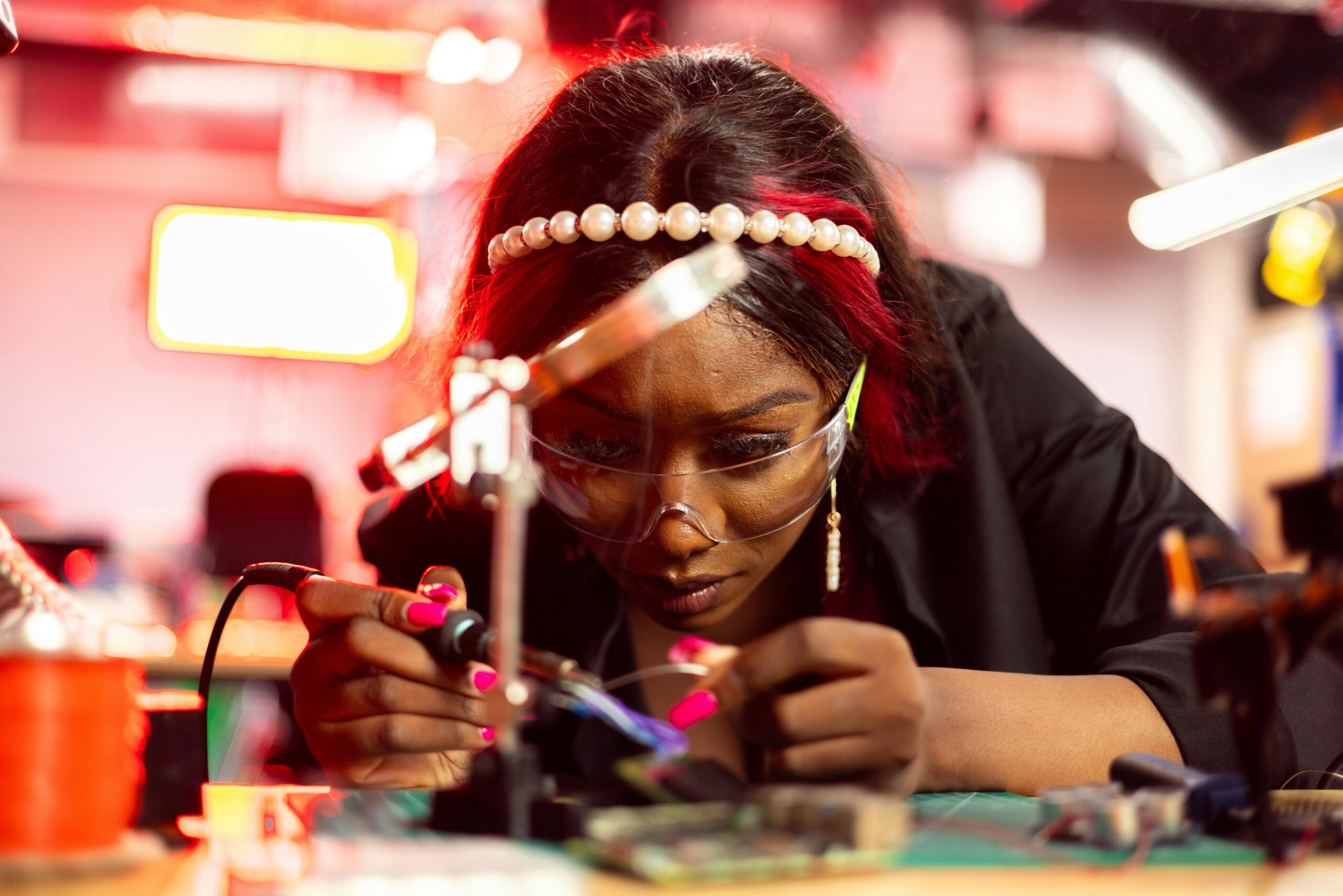
HBCUs are no longer the underdog in STEM. Across biotech, AI, cybersecurity, and climate science, students are leading research, innovation, and industry breakthroughs that are shaping the future.
Biotech and Life Sciences
-
Schools like Xavier, Tougaloo, Florida A&M, and Delaware State are producing students with hands-on lab experience in CRISPR, gene editing, and biomanufacturing.
-
Many graduates immediately enter FDA fellowships, biotech startups, or health tech companies, transforming communities with advanced medical solutions.
AI & Machine Learning
-
HBCUs now offer AI ethics minors, machine learning bootcamps, and generative AI labs.
-
Students are learning AI for healthcare, education, creative industries, and urban planning.
Cybersecurity
-
Virtual war rooms and ethical hacking labs prepare students for the booming cybersecurity sector.
-
Partnerships with NSA, Amazon, and Lockheed Martin have created direct pipelines to high-paying careers.
Environmental Science & Climate Tech
-
HBCU students are tackling climate and environmental justice through smart agriculture drones, urban farming tech, and water filtration systems.
-
The focus is on practical solutions for communities most affected by climate change.
How Students Can Get Training / Resources
-
NSA HBCU Cybersecurity Program – https://www.nsa.gov/Resources/Students/
-
AI4ALL HBCU Program – https://ai-4-all.org/programs/hbcu/
-
Coursera STEM for HBCUs – https://www.coursera.org/hbcus
-
CodePath.org Black Engineers Program – https://codepath.org/
HBCU ORIGINAL
Marshall Faulk to Southern University: Hall of Famer Takes Over Jaguars Program in Landmark Hire

BATON ROUGE, La. — Southern University is making a splash. A massive one.
Hall of Famer Marshall Faulk is officially returning home to Louisiana — this time as the new head coach of the Jaguars.
Southern has agreed to a three-year deal with Faulk, according to multiple sources, marking the first collegiate head-coaching opportunity for the New Orleans native. The move sends shockwaves across the HBCU landscape and continues a growing trend of marquee NFL legends taking the reins at historically Black programs.
Faulk, 52, spent the past year under Deion Sanders at Colorado, serving as the Buffaloes’ running backs coach and helping develop one of the nation’s most high-profile offenses. It was his first coaching job since retiring from the NFL — a reminder that Southern is betting big on star power and football IQ.
A Hall of Fame Resume Arrives at an HBCU Powerhouse
Before stepping into coaching, Faulk’s playing career was nothing short of iconic.
After shredding defenses for three seasons at San Diego State, he became the No. 2 pick in the 1994 NFL Draft. He went on to terrorize the league for 12 seasons with the Indianapolis Colts and the St. Louis Rams’ “Greatest Show on Turf.”
-
12,279 rushing yards
-
136 total touchdowns
-
2000 NFL MVP
-
Super Bowl XXXIV Champion
-
Pro Football Hall of Fame Class of 2011
Now he brings that pedigree less than 90 minutes from where he grew up in New Orleans — to a Southern program starving for stability.
Southern Turns the Page After Turbulent Season
Southern’s 2025 campaign has been brutal:
-
1–10 record
-
Nine straight losses
-
Head coach Terrence Graves dismissed after a 1–6 start
-
Fifth head coach since 2020
The Jaguars have talent, but not traction. Faulk’s arrival signals a reboot — and an era where Southern hopes to pair NFL star credibility with HBCU tradition.
A Trend Continues: NFL Legends Taking Over HBCUs
Faulk becomes the latest major name to enter HBCU coaching circles:
-
Michael Vick at Norfolk State
-
DeSean Jackson at Delaware State
-
Eddie George (Tennessee State, 2021–24)
-
Deion Sanders (Jackson State, 2020–22)
The star-coach phenomenon has injected new visibility, recruiting power, and national intrigue into HBCU football. Faulk immediately becomes one of the most prominent figures in the space.
What’s Next for the Jaguars?
Faulk inherits a roster needing direction and a fan base hungry for revival. His NFL experience, regional ties, and partnership with Sanders this past season offer Southern a blueprint for relevance — and maybe more.
Southern closes its season this Saturday against Grambling. After that, it’s Faulk’s show.
The Jaguars wanted a leader who could reset the culture.
They hired a Hall of Famer.
They hired Marshall Faulk.
-

 HBCU ORIGINAL4 weeks ago
HBCU ORIGINAL4 weeks agoPhiladelphia: DeSean Jackson & Mike Vick Lead the Charge at the HBCU Football Classic
-

 HBCU ORIGINAL4 weeks ago
HBCU ORIGINAL4 weeks agoElizabeth City State Stuns Bowie State 28–27 in Homecoming Heartbreaker
-

 HBCU ORIGINAL3 weeks ago
HBCU ORIGINAL3 weeks agoDELAWARE STATE SURVIVES MORGAN STATE COMEBACK
-

 HBCU ORIGINAL4 weeks ago
HBCU ORIGINAL4 weeks agoCoppin State Shows Fight in Season Opener Against Maryland at CFG Bank Arena
-

 HBCU ORIGINAL2 weeks ago
HBCU ORIGINAL2 weeks agoAlcorn State Braves Take on Maryland Terrapins at Xfinity Arena: Jameel Morris Shines
-
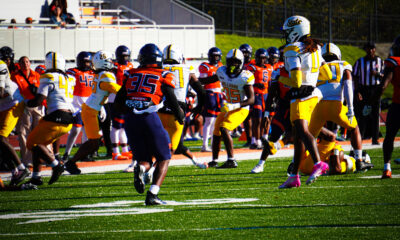
 HBCU ORIGINAL3 weeks ago
HBCU ORIGINAL3 weeks agoBowie State Bulldogs 28, Lincoln University (PA) Lions 17 Lincoln, PA — Frank “Tick” Coleman Field
-
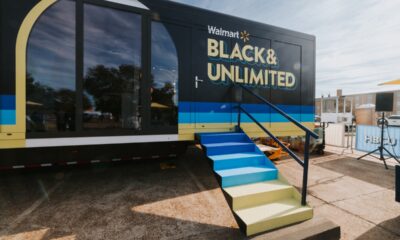
 HBCU ORIGINAL1 week ago
HBCU ORIGINAL1 week agoWalmart Launches Dedicated HBCU Page: A New Win for Culture, Commerce, and Community
-

 HBCU ORIGINAL2 days ago
HBCU ORIGINAL2 days agoJCSU & VIRGINIA UNION FALL IN THE NCAA D-II PLAYOFFS**
